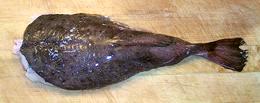
Top side

Bottom side

Pull off skin
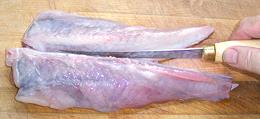
Follow the bones
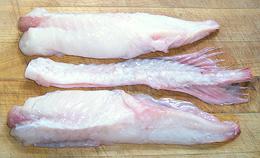
Fillets
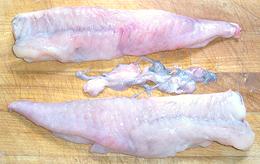
Remove membranes
Monkfish is highly sought after for the unique characteristics of it's flesh. It somewhat resembles lobster in flavor and stays firm and solid even if overcooked. This makes it excellent for grilling on skewers, because it won't crumble and fall off. It is a costly fish, tails selling for 2006 US $6.00 / pound in Korean markets here in Los Angeles.
Yield: A 1.3 pound monkfish tail yielded 15 oz of clean flesh (72%).
Stock: The bones, skin, fins, membranes etc. make a very nice mild soup stock, but one fish isn't going to make a whole lot of it so blend with other mild fish stock if you need more.
Monkfish is very easy to process because most of the work has already been done.
- Pull the skin off over the tail and cut off the tail.
- With your fillet knife follow the fins and heavy backbone from top to bottom being careful to take all the flesh.
- With the help of your fillet knife pull off all loose membranes, cutting wherever they threaten to pull away any of the flesh. I'm not sure what those two darker lumps up at the front are but I pull them off and toss them in the stock pot with all the skin, membranes, bones, fins, etc.
- At this point you have two thick fillets. Most recipes will call for them to be cut into chunks crosswise. Any remaining membranes will shrink when cooked but cut this way they aren't a problem.
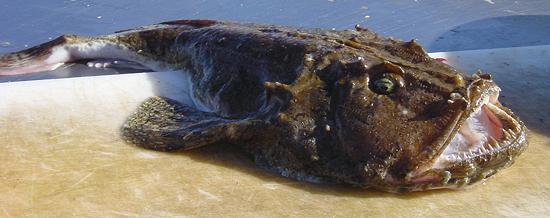 [Angler; Queue de Lotte (French); Lophius americanus (North
America), Lophius piscatorius (Europe)]
[Angler; Queue de Lotte (French); Lophius americanus (North
America), Lophius piscatorius (Europe)]